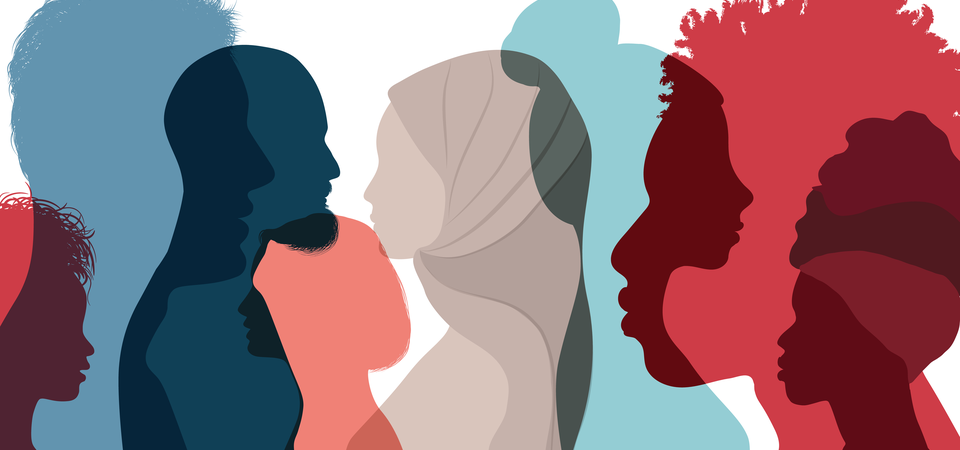
The terms diversity, equity, and inclusion have become commonplace buzzwords in corporate settings and are used somewhat interchangeably these days. But they’re more than just buzzwords; they are the guiding principles that many organizations today follow in order to build stronger businesses.
It makes sense, too, given that businesses with ethnically and cultural diversity tend to be more profitable than more homogeneous firms by as much as 36 percent. Businesses with more than 30 percent female executives tend to outperform those with less gender diversity. Businesses appear to be responding to the promise of profitability, spending about $8 billion in diversity training annually. However, it’s likely the impact has been somewhat limited. Generally speaking, minorities make up an astonishingly low portion of management in the top companies in the U.S.
In order to truly move beyond simple jingoism, businesses need to embrace diversity, equity, and inclusion not for the good of the bottom line but for the good of their corporate culture. That is, they need to internalize these principles and make them a core part of who they are as a business.
In order to become a more diverse, equal, and inclusive organization, it’s important to understand the difference between the three terms. Let’s take a closer look at the definitions and the differences between them in order to better understand how to implement programs that truly make a difference in an organization’s culture.
Keep in mind that there are a variety of definitions for these terms, and that this is intended to be more of a guide than the final word.
What Is Diversity?
Diversity describes the level to which a workplace is composed of people of different genders, races, ethnicities, sexual orientations, religion, language, and other characteristics. Keep in mind that these are not the only characteristics that define a diverse workplace, but generally speaking, a workplace is considered diverse when its employees demonstrate a wide variety of differing characteristics.
Diversity is increasingly important for a number of reasons, such as:
What Is Equity?
Workplace Equity refers to employees having equal access to opportunities regardless of who they are in terms of job title, gender, race, ethnicity, etc.
Too often, the term equity is confused with “equality,” and is closely associated with compensation structures. To be sure, equality is an important issue that should be addressed, particularly as it pertains to compensation. But treating people equally isn’t the same as treating people equitably. Equality means treating everyone the same, while equity means recognizing that diverse employees will have diverse needs.
Thus, workplace equity policies are formed to promote equal access to advancement opportunities, training and skills development. Equity policies level the playing field so that employees do not have either unnecessary barriers or disadvantages to opportunities within the organization. Equity policies also attempt to address inherent biases that managers may hold, whether they are aware of them or not. For example, HR may anonymize job applications for hiring managers in order to mitigate any conscious or unconscious biases they may have.
Equity and diversity policies must be developed together, as they both contribute to developing a strong workplace culture. Diversity ensures that different people can join and participate in the workplace, while equity acknowledges that their differences are not a factor in their advancement.
What Is Inclusion?
Workplace inclusion ensures that members of a diverse workforce are also included in the company culture and decision-making processes. Typically speaking, inclusion is a set of social behaviors and norms that ensure people feel welcome. Inclusivity plays an essential role in ensuring diversity initiatives succeed, but also are a significant contributor to developing an engaged and productive workforce.
Part of developing an inclusive culture is helping employees recognize their own unconscious biases and actively work to overcome them. Inclusivity also helps employees and managers need learn to make a conscious effort to both recognize when someone is being excluded and strategies for including them. The goal here is to ensure that no viewpoint or voice is underrepresented in the company.
Most importantly, inclusion is about kindness. An inclusive culture encourages employees to engage each other, making connections over common interests and celebrating their differences in a positive, constructive manner.
Just as it’s impossible to have diversity without equity, it is also impossible to have diversity without inclusion.
How to Foster a More Diverse, Equitable, and Inclusive Workplace
There are many initiatives a company can form in order to achieve a more diverse, equitable, and inclusive workplace. Here are a few things your company can do to promote a workplace that works for everyone.
Develop a Strategic Training Program
Diversity training is no longer optional in the modern workplace. But that doesn’t mean employees should just be shoved into a room and given a set of jingoistic phrases to follow. Indeed, real diversity training requires employers to help employees understand and address their unconscious biases.
Human beings are wired to recognize differences. As such, we’re often predisposed to certain biases, whether we’re aware of them or not. Providing training that addresses unconscious bias in the workplace can help to overcome barriers that prevent diverse hiring and advancement, as well as making the workplace fairer and friendlier.
Develop Diversity Networks
Diversity networks are groups of people within an organization who share a social identity. This can be around race, ethnicity, gender, etc. Diversity networks have proven to be valuable in helping members of a minority in a workplace advance, but they can also encourage employee engagement. What’s more, diversity networks help organizations ensure that all employees can have their voices heard.
Facilitate Ongoing Feedback
No workplace is perfect, but that doesn’t mean an organization shouldn’t aim for perfection. And a huge part of that is gathering feedback on a regular basis. Keeping a finger on the pulse of the workforce is a key part of knowing whether policies designed to foster diversity, equity, and inclusion are actually working.
While there is no panacea for making a workplace more diverse, equitable, and inclusive, there are steps that every organization should take to work towards that. As the evidence shows, organizations that develop a strong corporate culture that relies on these principles will ultimately succeed in both the marketplace and in employee satisfaction.



